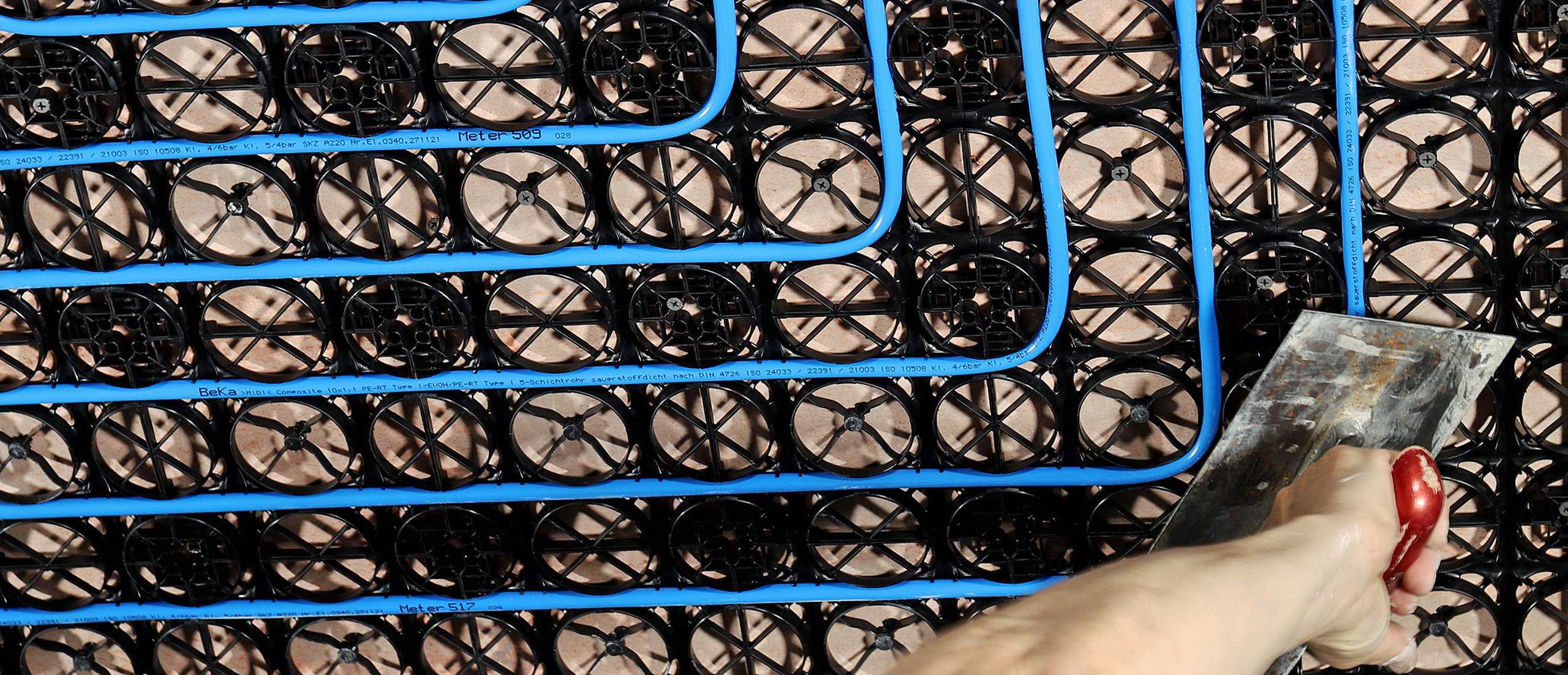How to Install a Ceiling Heating Using the Plastering Method
Installation instructions
Our kit for retrofitting ceiling heating using the plastering method combines simple, tool-less installation with great flexibility in implementation. To demonstrate this, we have carried out a test installation of approximately 3 m² and documented it in pictures. The main installation steps are shown and briefly described on this page. Detailed installation instructions can be downloaded at the bottom of this page and are included with each heating kit.
The plastering kit contains all the components needed to retrofit ceiling surfaces as heating surfaces. The 10 mm PE-RT heating pipes are quickly and neatly laid in the previously installed honeycomb elements. The ceiling heating is connected to the existing heating system via return temperature limiters and allows independent control. Suitable plaster materials for ceiling heating are gypsum plaster, lime plaster and clay plaster and must be purchased separately.
Installation of a plaster ceiling heating
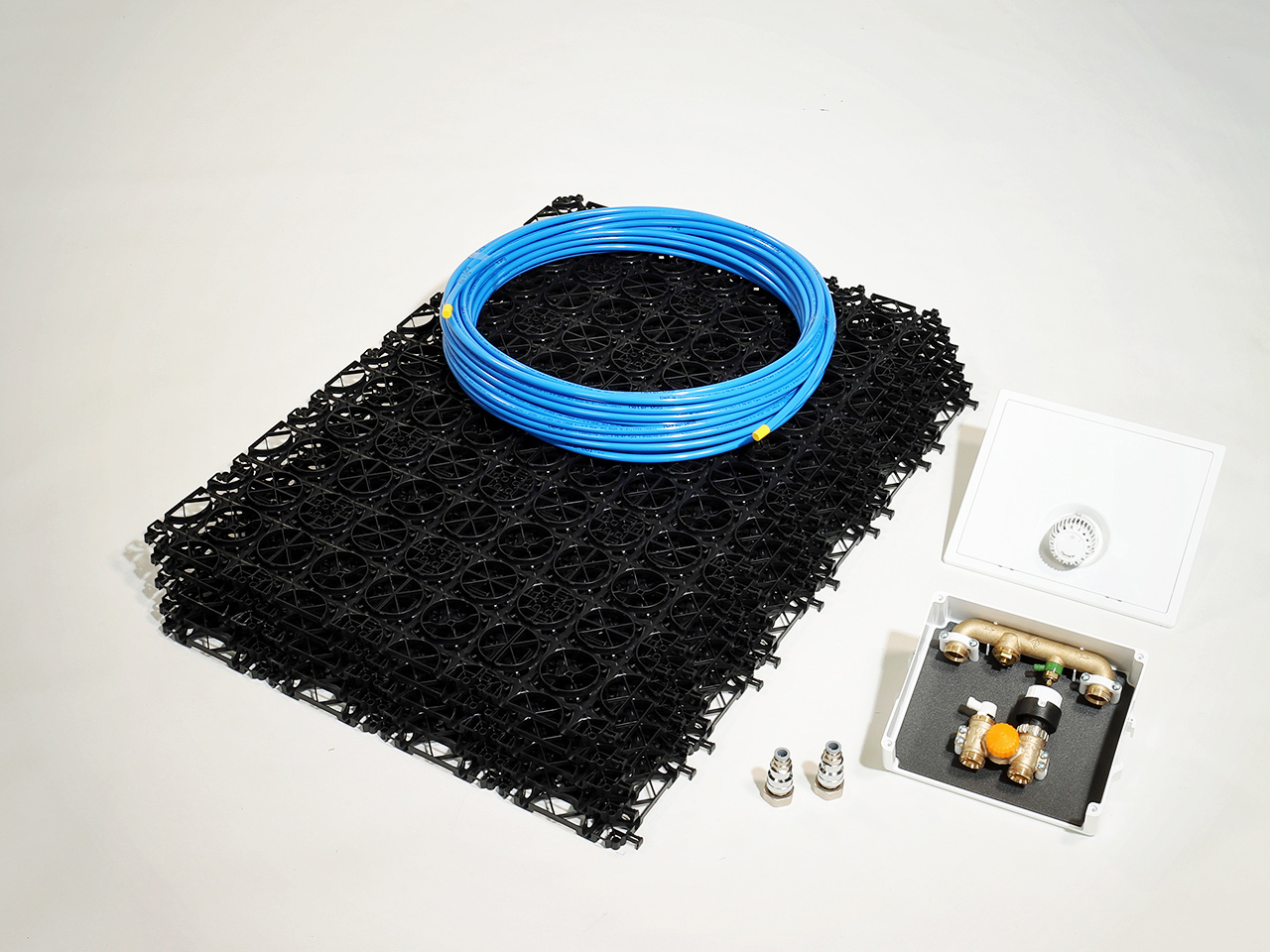
Package contents
The kit components for plastered ceiling heating vary depending on the surface selected. Please refer to the PDF installation instructions or the relevant product page for the exact scope of delivery. You can also find selected accessories and tools in our shop.
Note
Despite the simplified installation, the following also applies to FLEXIRO ceiling heating for lime, gypsum or clay plasters: Work on heating systems requires sufficient technical knowledge and skills. If in doubt, the installation should be carried out by a professional.
1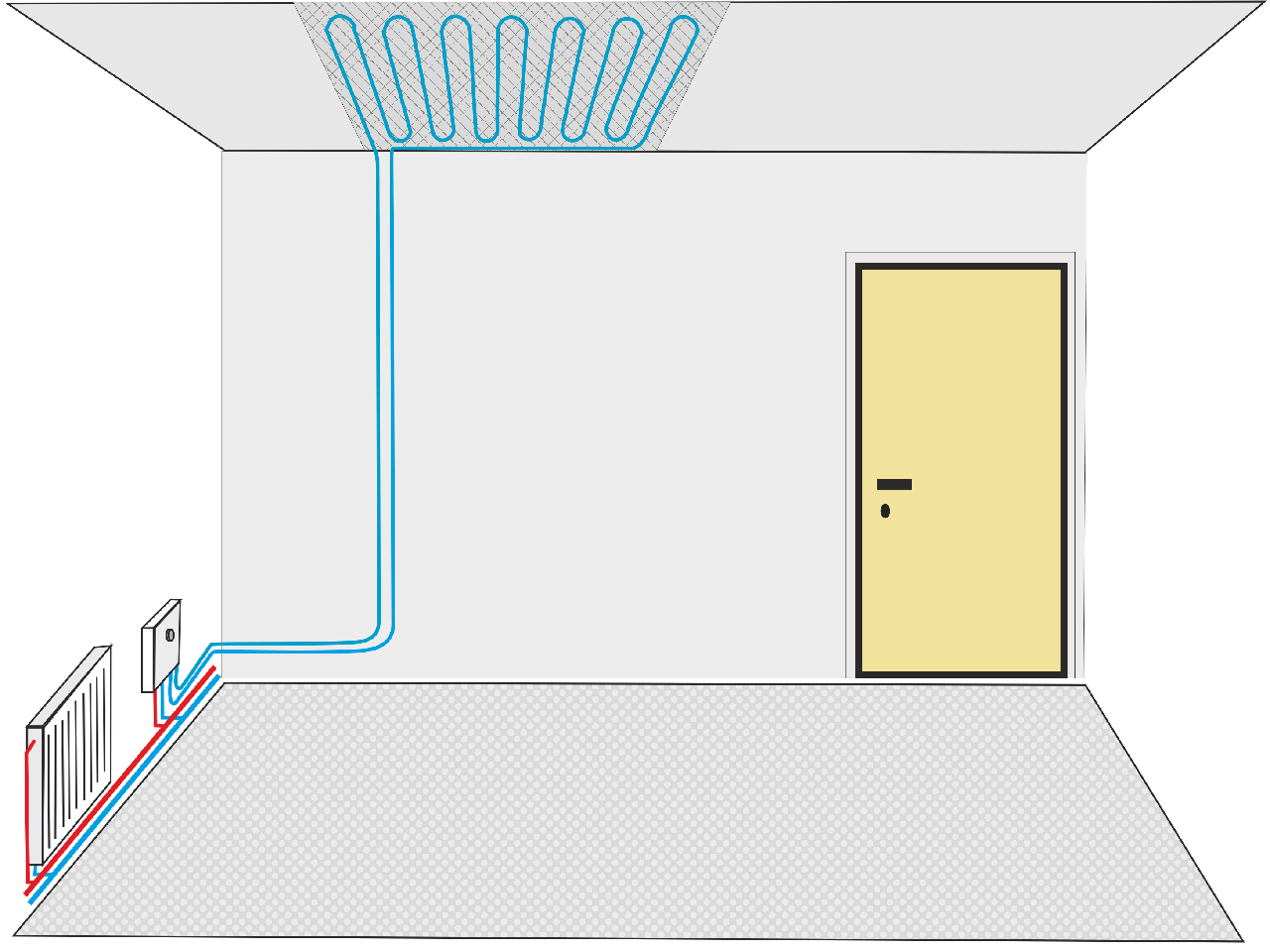
Arrangement of the ceiling heating panels
The concrete ceiling on which the ceiling heating is to be installed must have sufficient load-bearing capacity and be suitable for plastering. With a plaster thickness of approx. 17 mm, the additional load of the fully installed ceiling heating is approx. 22 kg/m².
The arrangement of the individual ceiling heating areas must be determined at the start of the work. The honeycomb elements (150 mm x 150 mm) used to secure the heating pipe can be plugged together in any direction. Any fixtures in the ceiling surface, such as cable channels or lamp suspensions, should be installed before the ceiling heating is installed. The honeycomb panels are cut out at these points. The edges of the ceiling to the walls should then be filled with a permanently elastic sealant.
2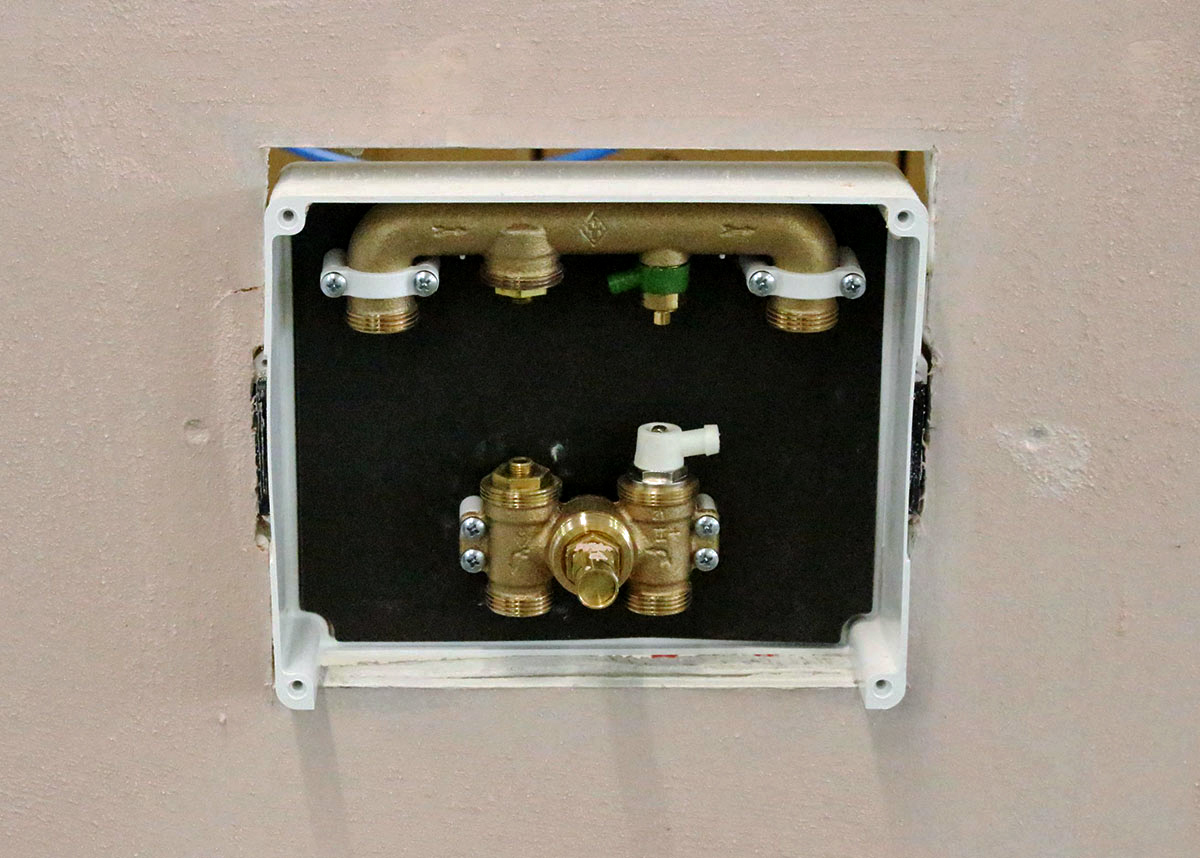
Positioning of the RTL box
The first step is to define the arrangement of the heating circuits.
ATTENTION: Set 2.7 m² corresponds to one heating circuit, set 5.4 m² corresponds to 2 heating circuits, set 8.1 m² corresponds to 3 heating circuits, set 10.8 m² corresponds to 4 heating circuits.
The position of the RTL box is chosen so that the heating pipes of all the heating circuits can be routed directly to the box without an extension. Care must also be taken to ensure that the room air can flow around the thermostatic head and that the control box can be operated safely at the same time.
3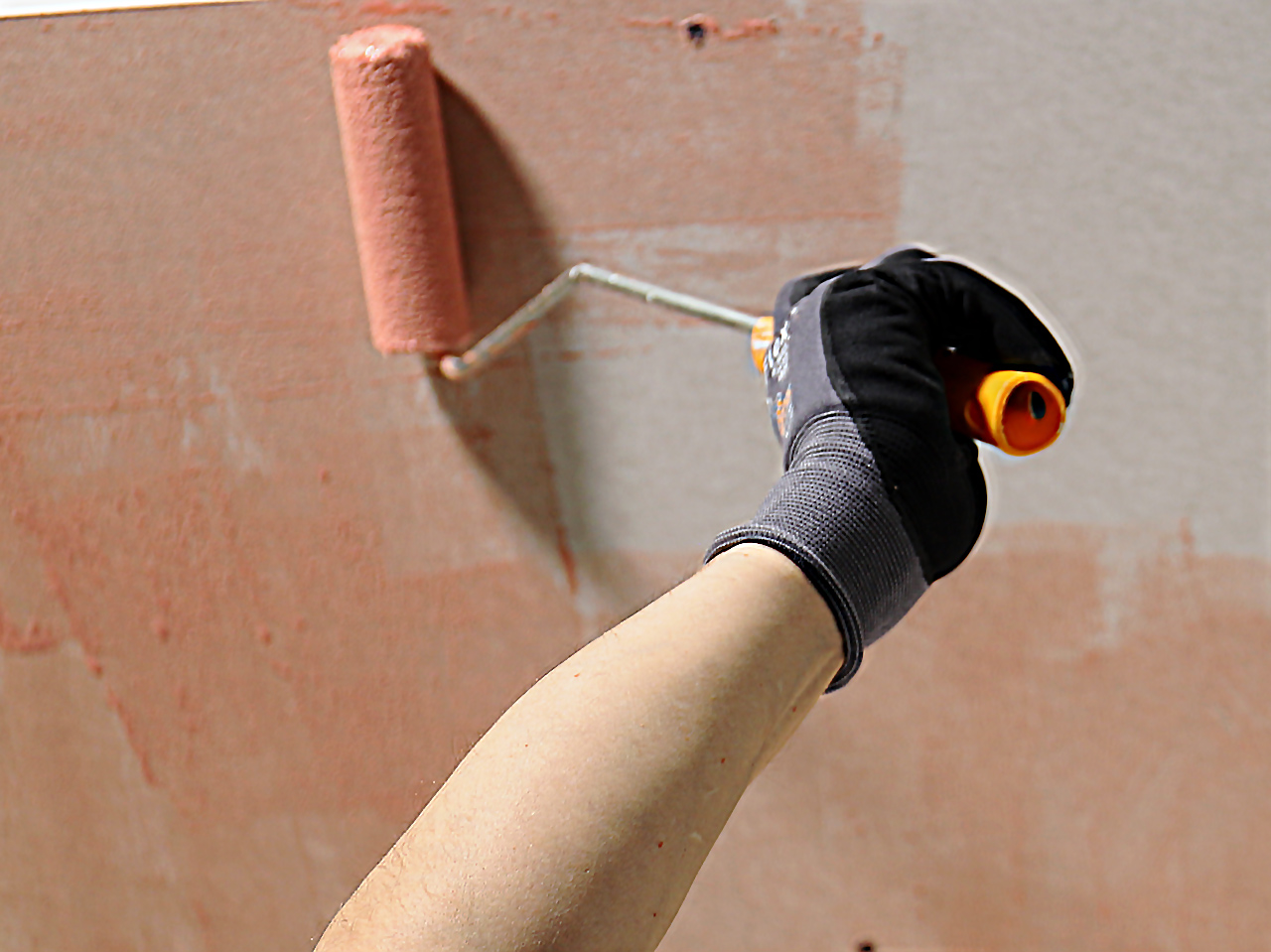
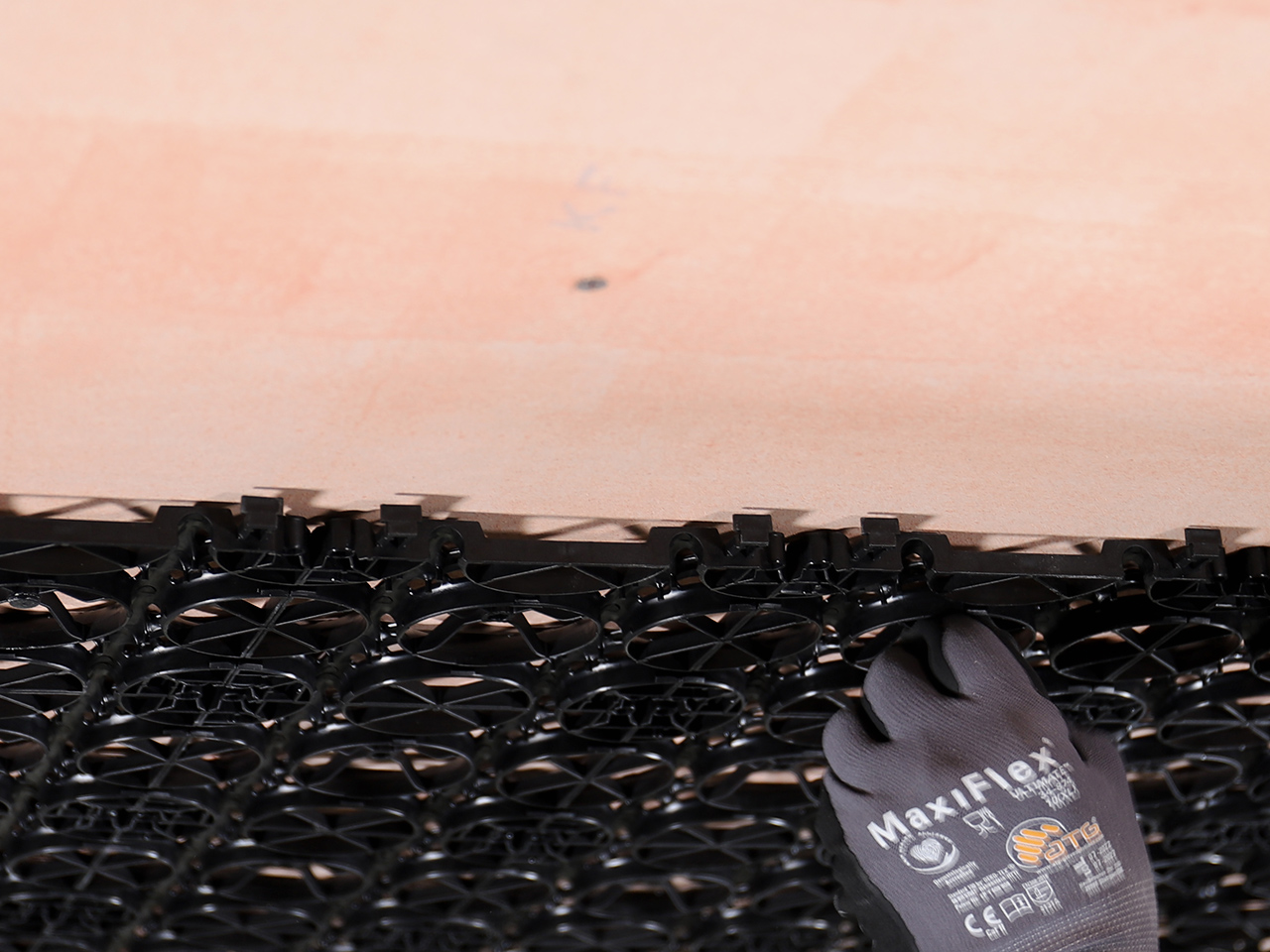
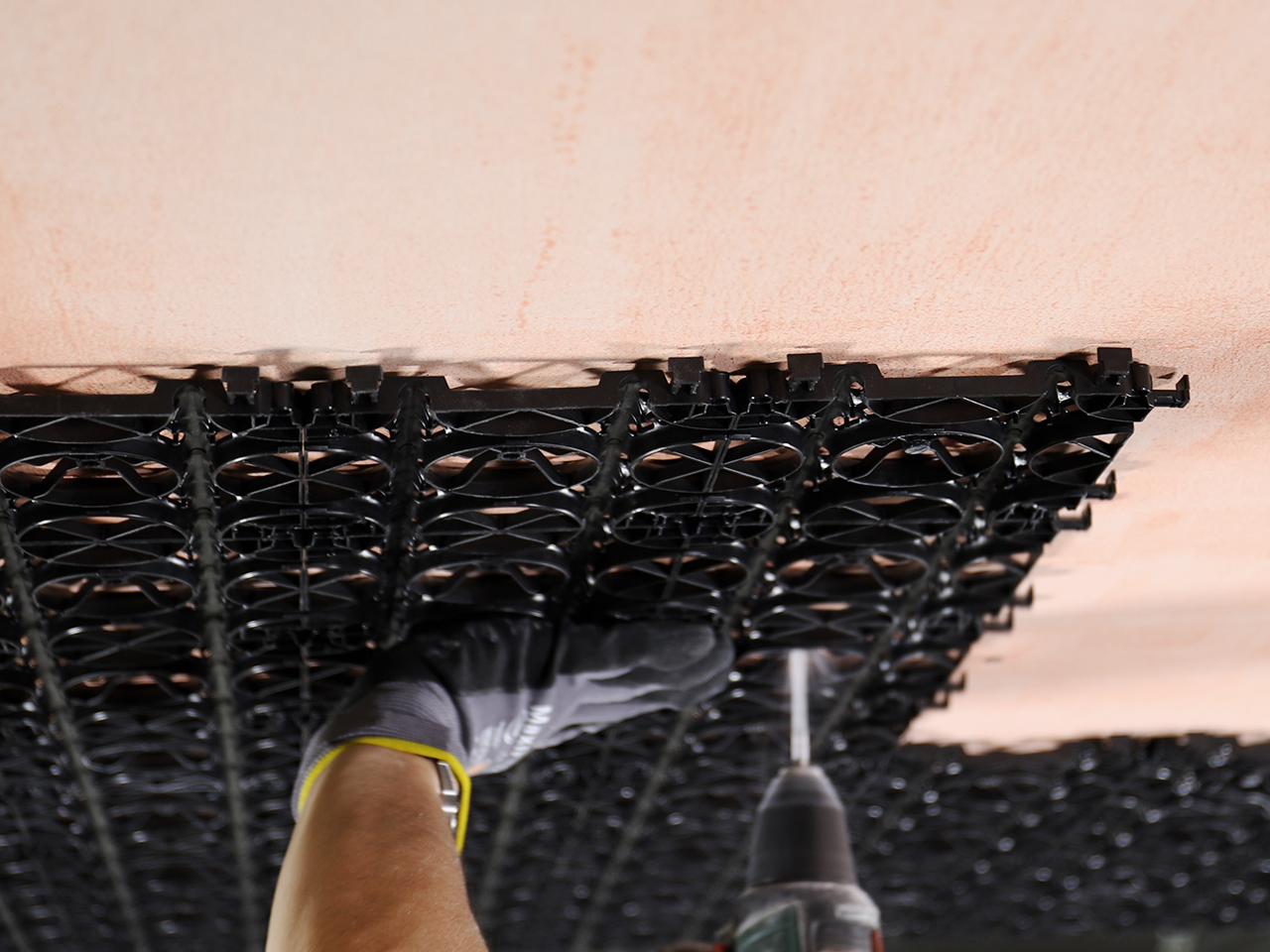
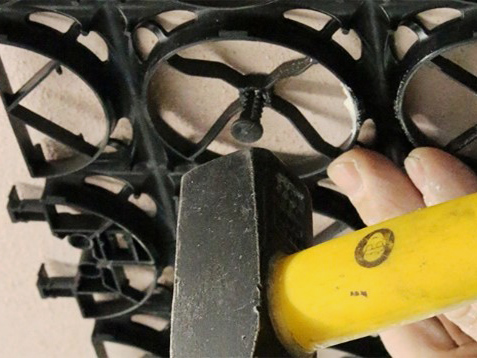
Mounting the honeycomb elements on the ceiling
The ceiling must be prepared for plastering. It may have to be pre-coated with a plaster primer, or have a base coat or plaster primer applied. The honeycomb panels are then fitted together in the desired arrangement.
Position the honeycombs on the ceiling and pre-drill holes for the plastic hammer nails. The hole diameter is 6 mm. The honeycombs are fastened by hammering in the plastic hammer-in nails. Each honeycomb must be fixed.
4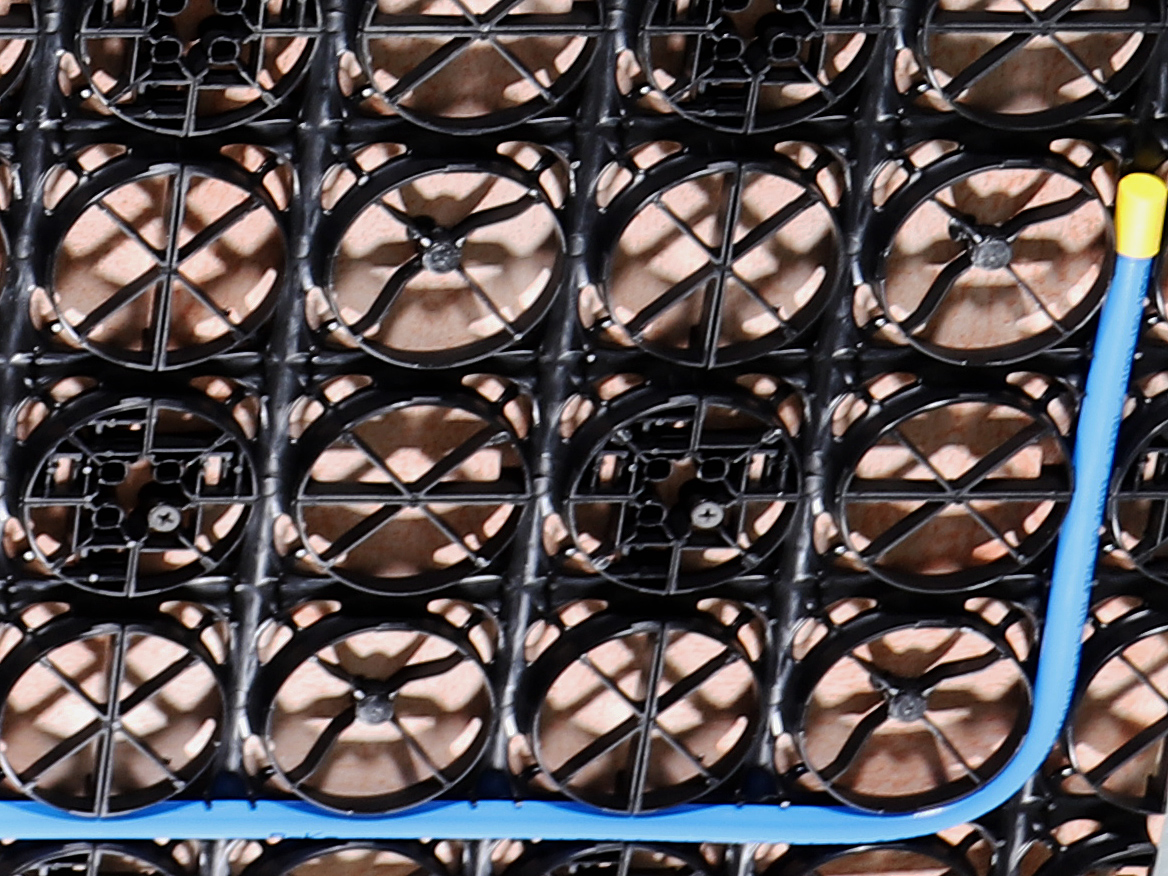
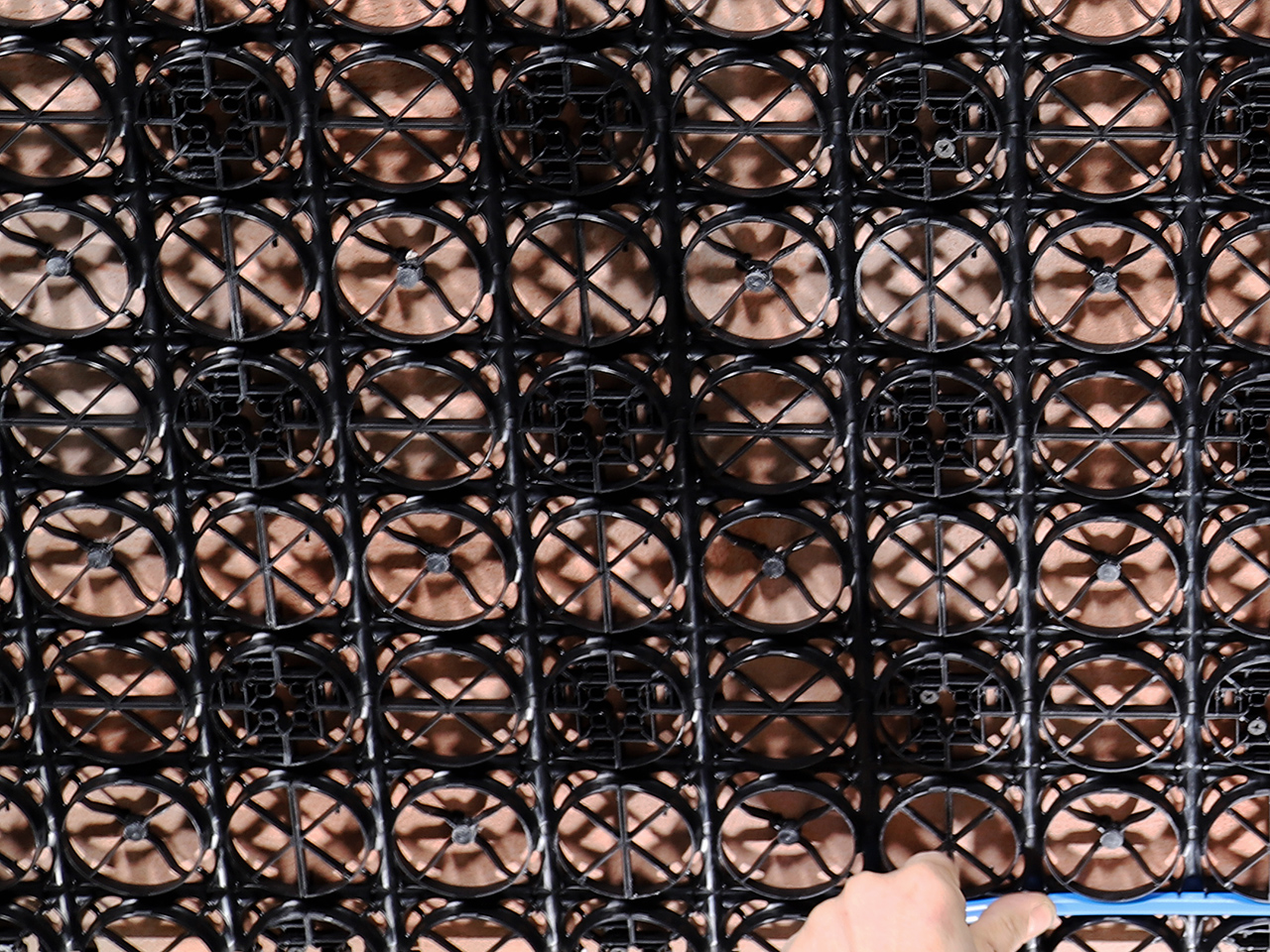
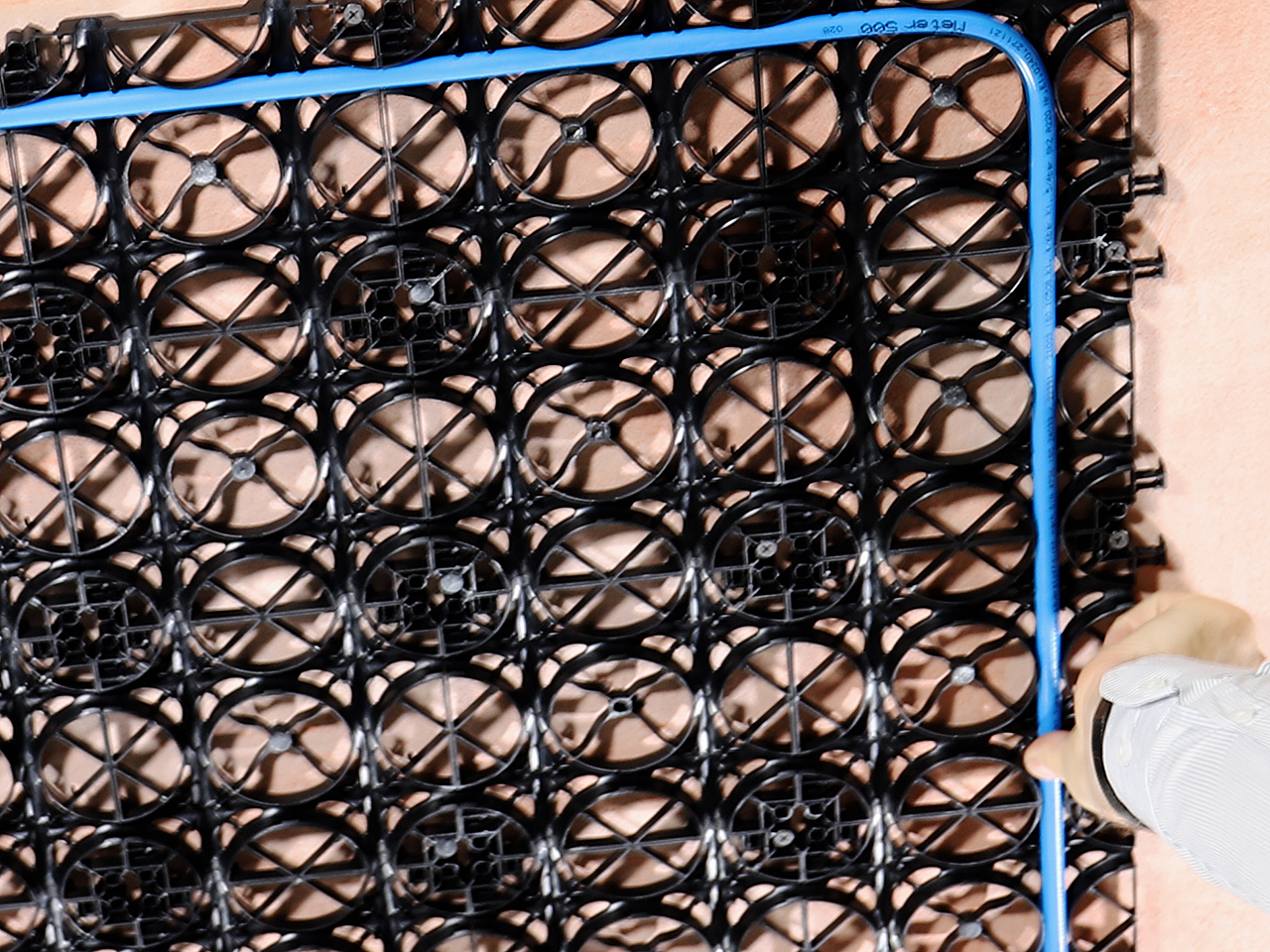
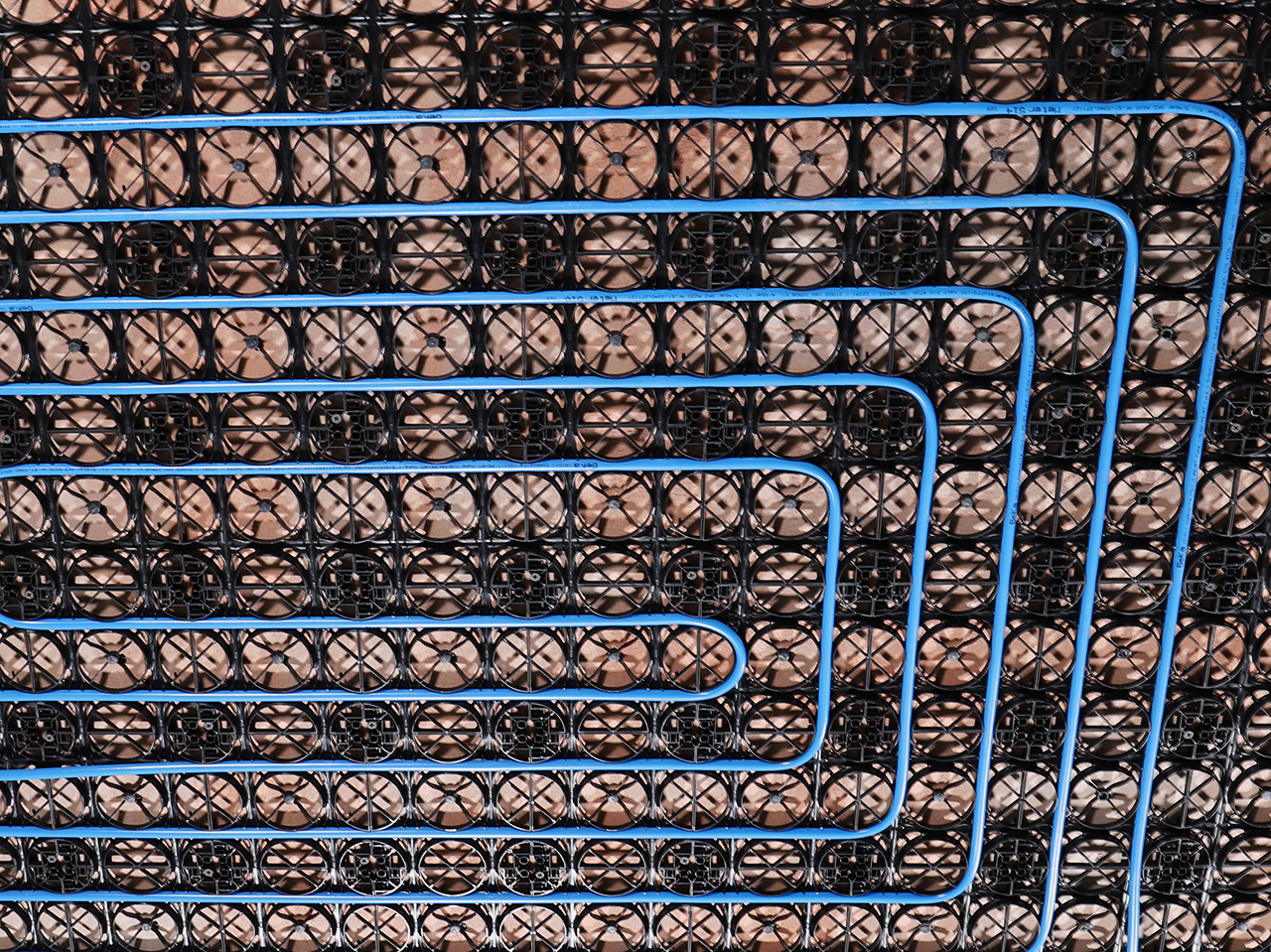
Installation of the heating pipes
Laying the heating pipes should start near the manifolds to minimise the length of pipe required for the connection.
Depending on the initial conditions, different types of installation are possible, e.g. meandering or spiral installation. The pipes must be laid without twisting.
The minimum distance between the heating pipes is 7.5 cm. The distance between the ceiling heating and the walls of the room should be at least 5 cm. Avoid kinks when bending the pipes. If the pipe bend protrudes from the honeycomb element, the loops can be fixed with dowel hooks.
5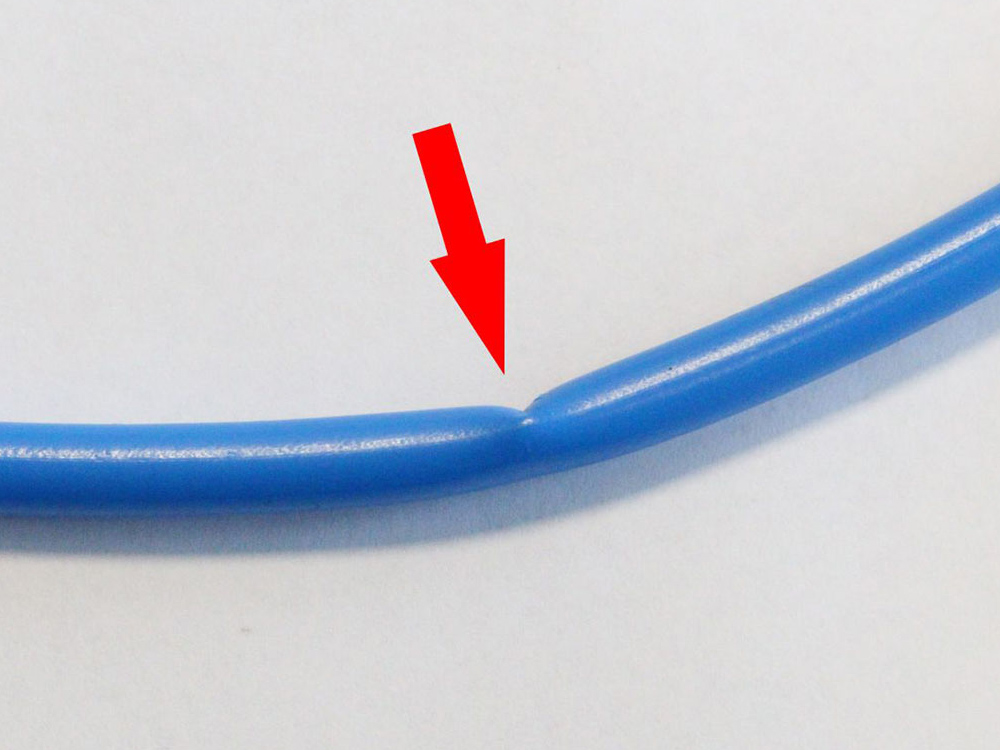
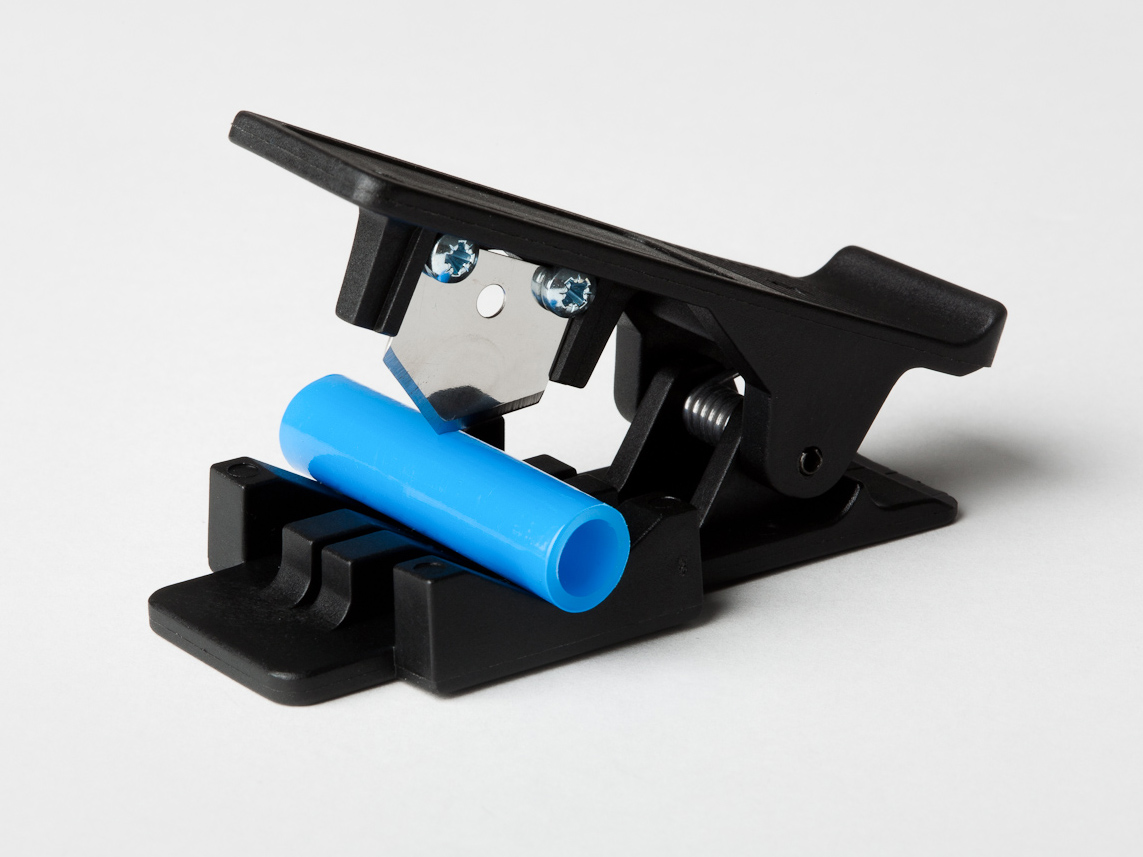
Repair of the heating pipe
Kinked or damaged areas of the heating pipe must be cut out. The pipe must then be reconnected using a permanently sealed coupling.
The coupling must be protected from direct contact with the plaster or surface covering by wrapping it in PE film. The position of the coupling should be marked. This procedure will also allow the pipes to be extended if necessary.
6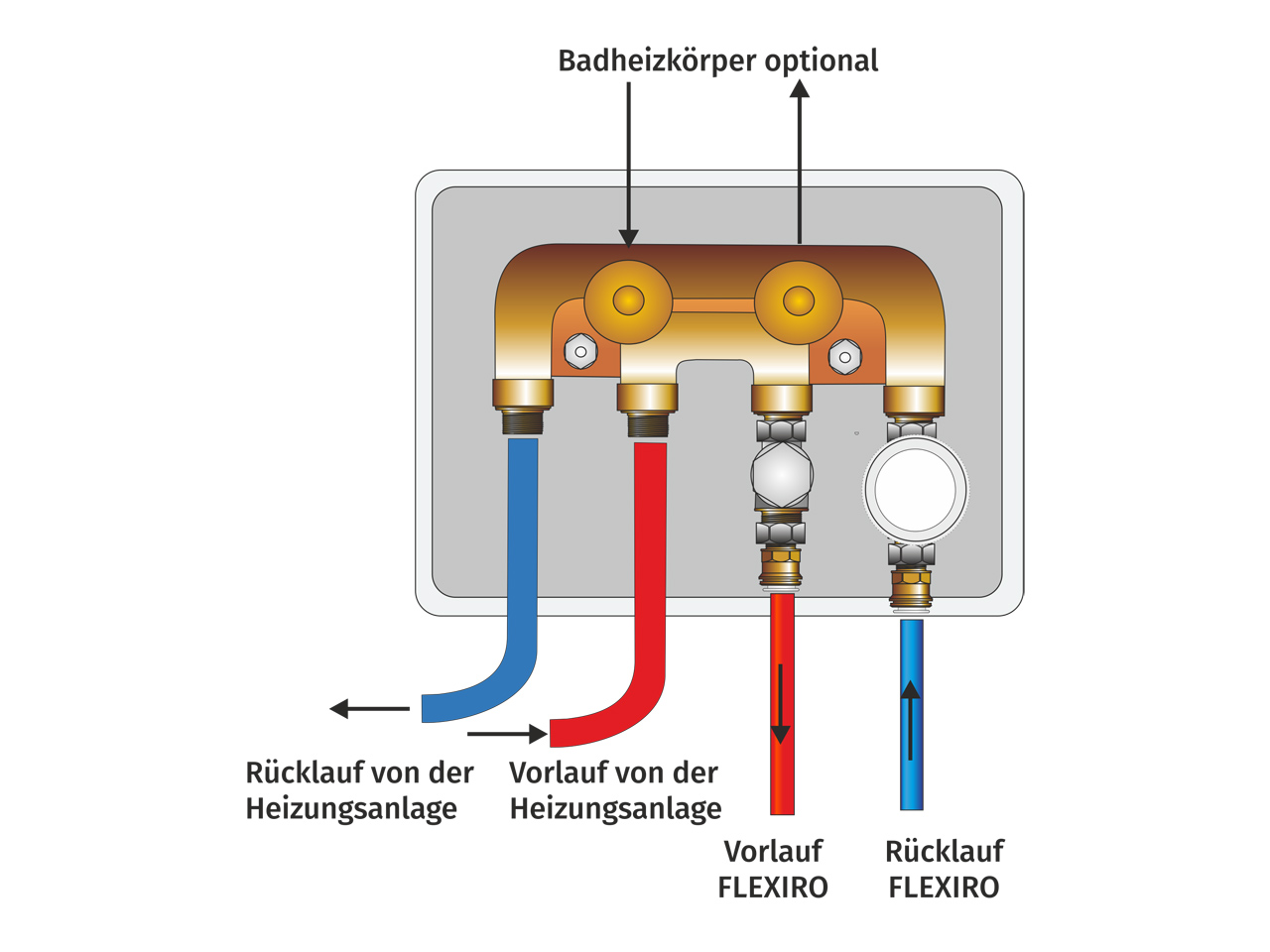
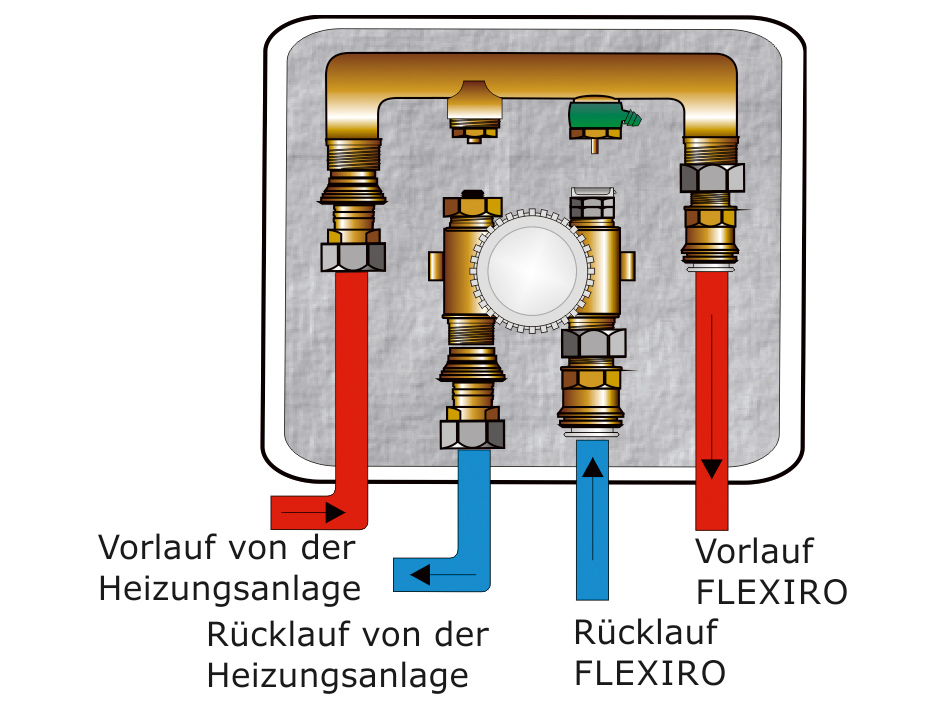

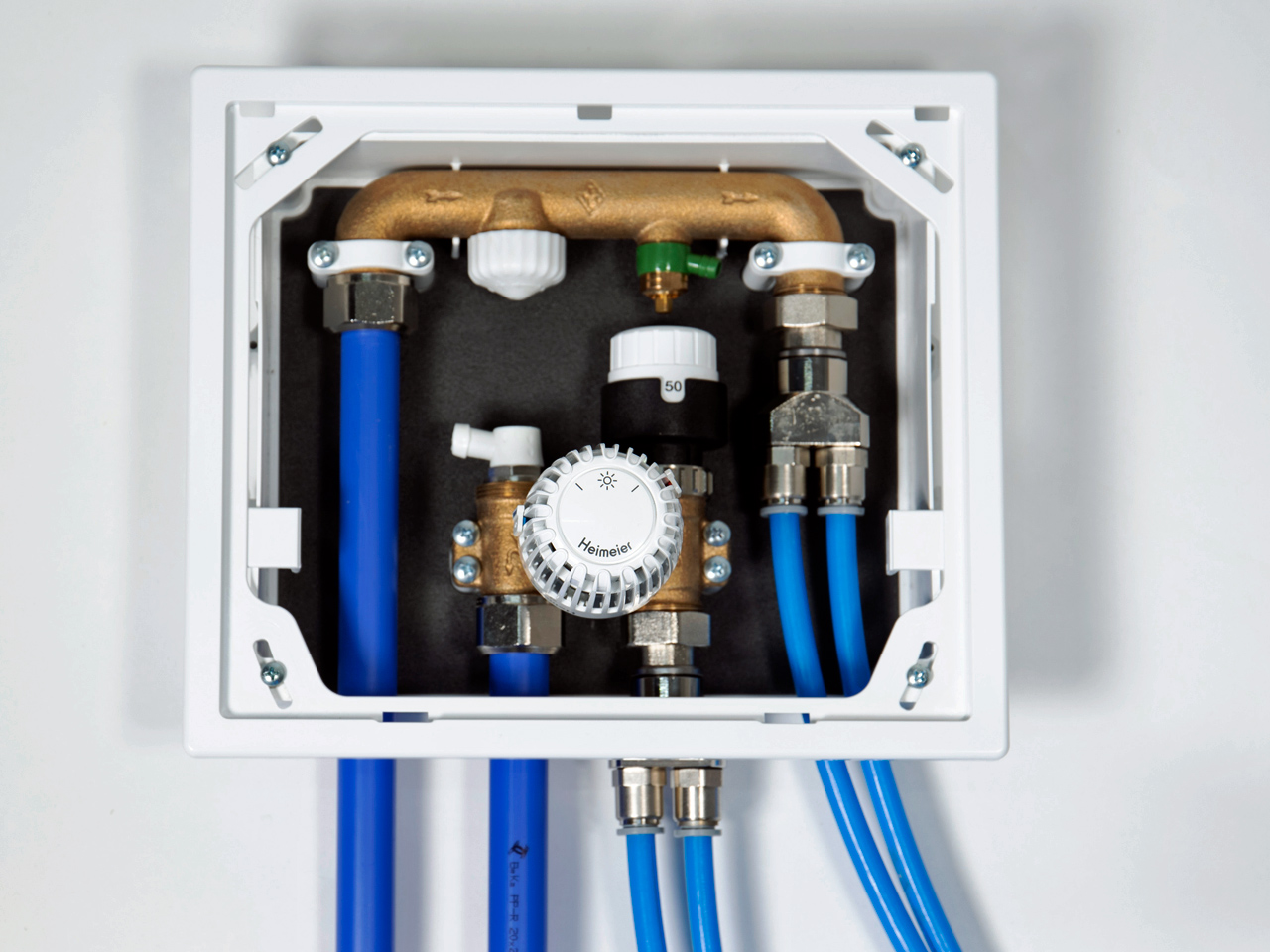
Connection to the RTL box
The distributor fingers are connected to the RTL box with a Eurocone screw connection. The Eurocone has a self-sealing effect, while the metal screw connection has a purely locking function. Over-tightening must be avoided at all costs in order not to compromise the tightness of the heating system.
The heating pipes in the manifolds are connected using a simple plug-in system. The heating pipes, which are cut straight and shortened if necessary, are inserted directly into the plug-in connections of the manifold fingers as far as they will go.
7
Connection to the heating system
Usually the ceiling heating is integrated into the existing heating system in parallel with other radiators or as a replacement for a radiator that is removed. This is done by inserting a T-piece (not supplied) into the supply and return pipes of the heating system.
Ensure that the flow and return in the RTL box are correctly assigned. Reversing the flow and return in the control box will disable the thermostatic valve and prevent normal operation of the ceiling heating system.
8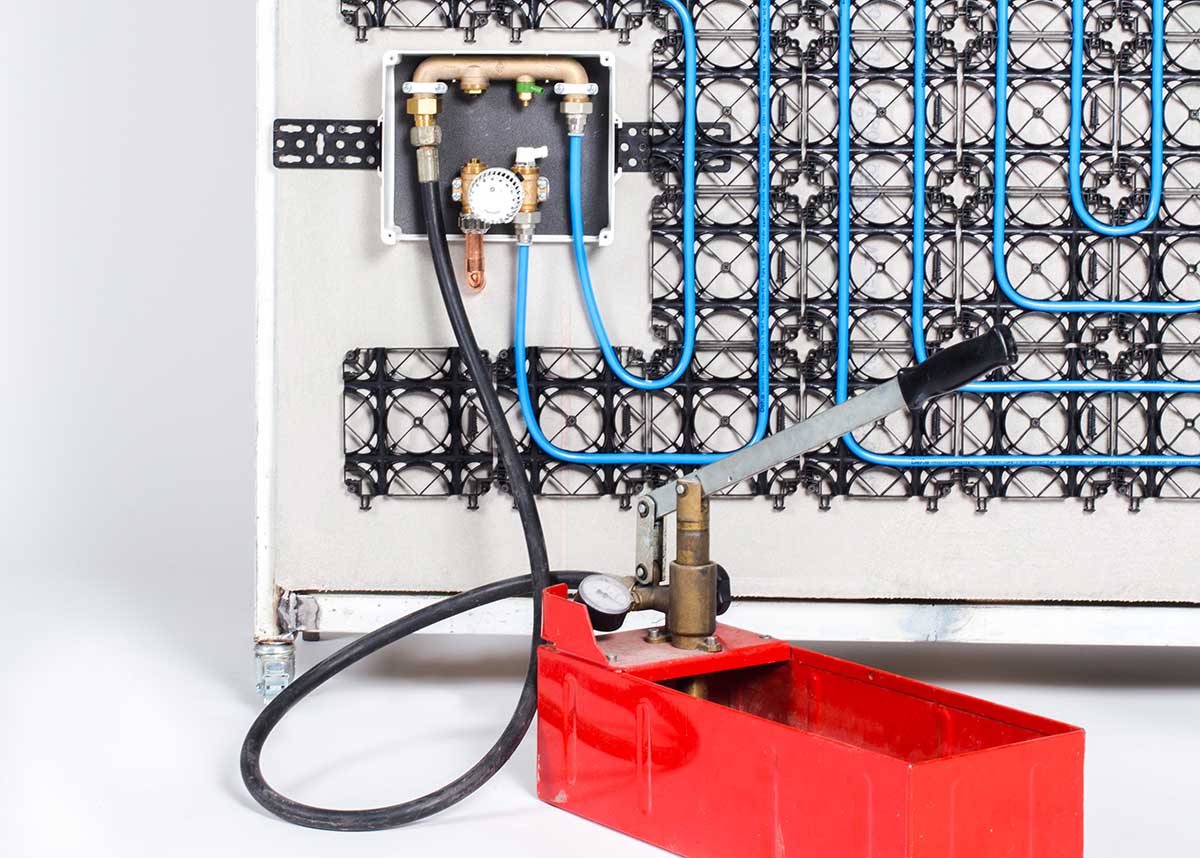
Carrying out a pressure test
Before commissioning the ceiling heating system, it is essential to ensure that the system and all associated components are correctly installed and tightly sealed. The pressure test pump is available as an accessory from the shop.
See video for exact procedure and connections for pressure test
9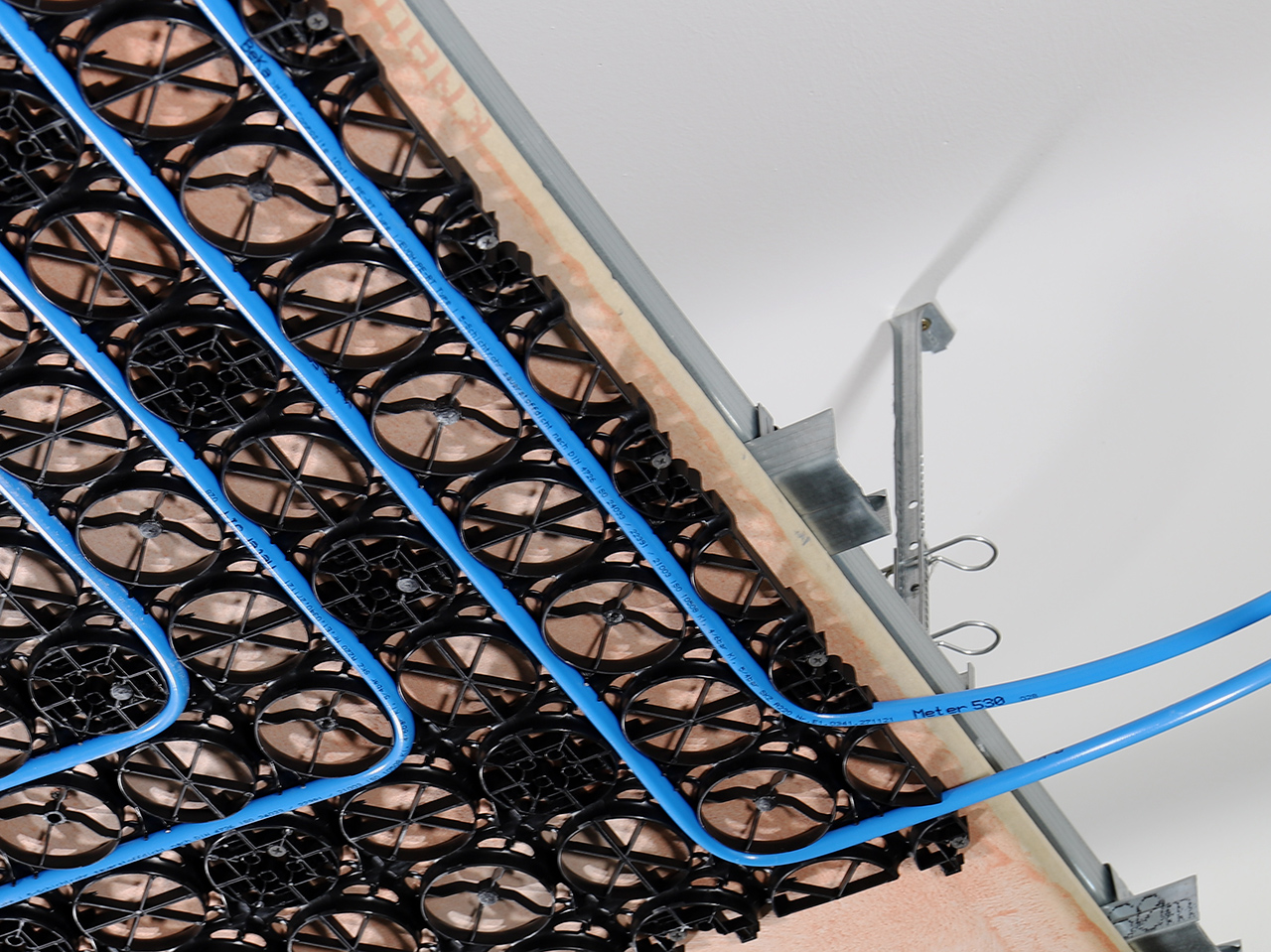
Test run of the ceiling heating
We strongly recommend that you carry out a test run of the system before plastering the ceiling surface. This is the last opportunity to correct any installation errors or damage!
10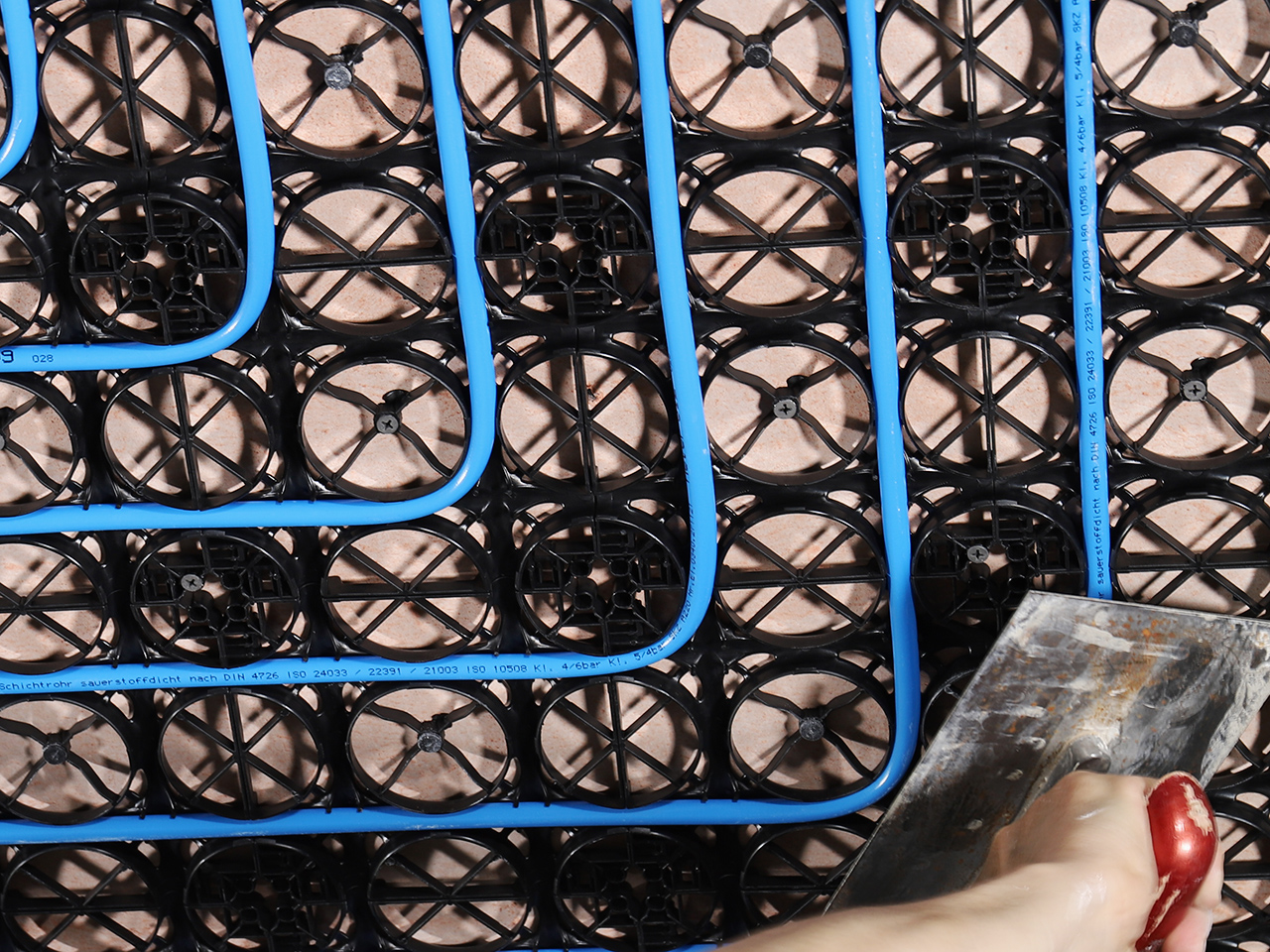
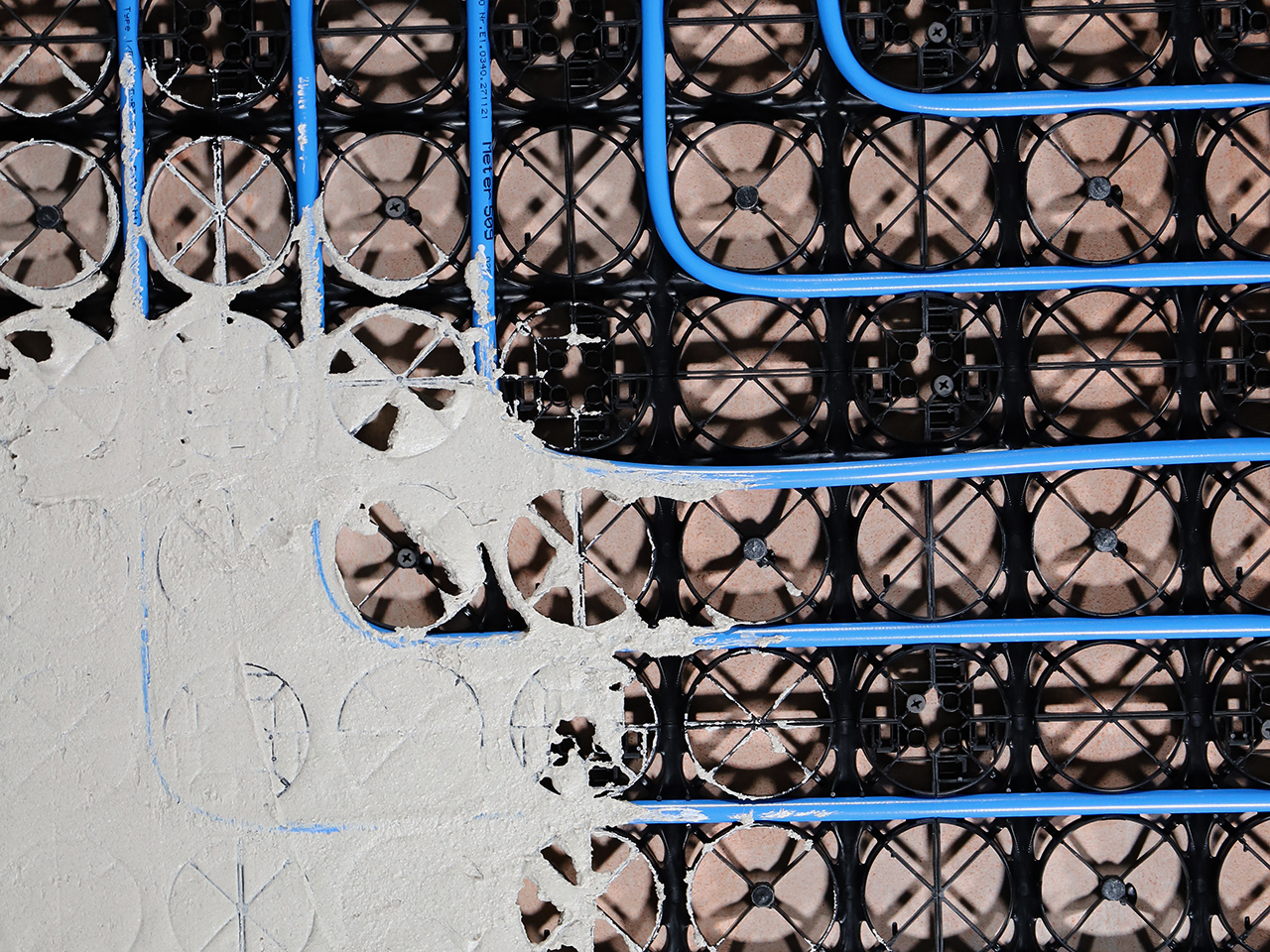
Applying the plaster compound
All common plaster materials approved for use with ceiling heating systems, such as gypsum plaster, lime plaster or loam plaster, are suitable for plastering. Always follow the manufacturer's instructions when choosing the plaster material.
Before you start plastering, make sure that the ceiling heating is completely switched off. A warm ceiling heating system can severely disrupt the drying process of the plaster material and damage the plaster.
Seal the edge joints to the adjacent components with flexible joint sealant.
11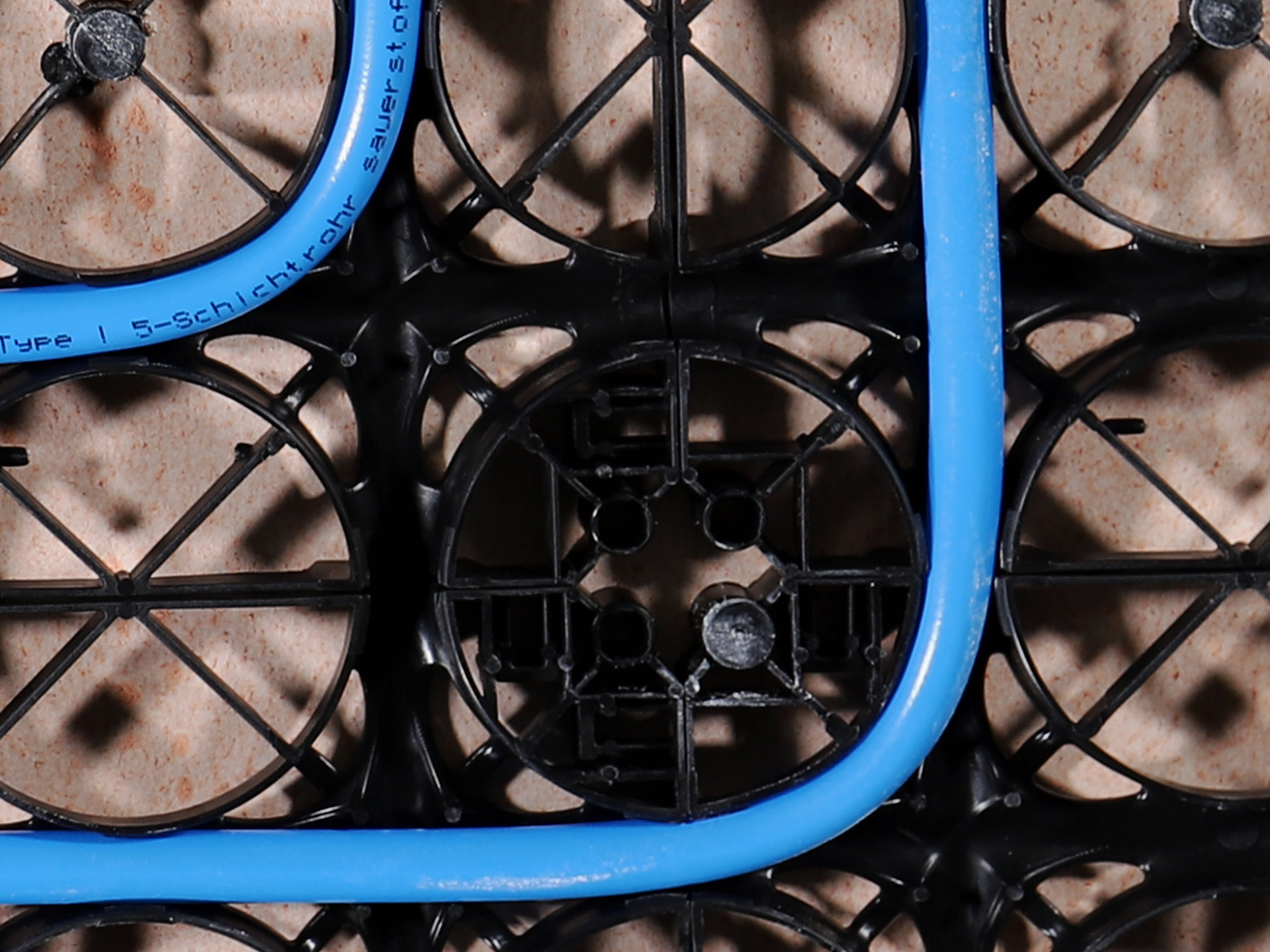
Commissioning of the ceiling heating
After completion and natural drying of the plaster, paint and finishes, the ceiling heating can be commissioned. The specific heating instructions of the plaster manufacturer should be followed during the heating process.
During the first few hours of operation, the desired surface temperature is set on the control box by turning the thermostatic valve head. The ceiling heating is a radiant heating system. The feeling of heat is very direct. It is best to set the temperature according to how comfortable you feel, not according to the measured room temperature.
In this way, heating costs can be saved without sacrificing thermal comfort.
12To conclude
Despite the simple design of the plaster ceiling heating system and the ease of installation, we must point out that, as the manufacturer, we can only guarantee correct delivery from the factory and not installation and connection by third parties. Please also observe the current standards and regulations for heating systems.
FLEXIRO wishes you all the best with the implementation of your project!
17help
Yes, it is possible to use the ceiling heating kit for cooling in summer. Sufficient cool water supply is required though. Further details can be found at: How to use a ceiling heating as cooling ceiling.
If there is an unheated room above the ceiling activated with FLEXIRO and the old ceiling has no thermal insulation or the heat transfer coefficient of the ceiling is unknown, we recommend adding an additional insulation layer. In any case, thermal insulation above the ceiling heating will shorten the reaction time of the heating.
The substructure for the ceiling heating should comply with the dry construction guidelines for suspended ceilings. When using CD profiles and direct hangers, a suspension height of approx. 5 cm can already be sufficient. A small distance to the raw ceiling is also required for the installation of the FLEXIRO connection pipes and plug connections. The dry construction guidelines also permit the use of wooden beams as a substructure for the plasterboard. However, their stability and torsional stiffness is usually less good compared to CD profiles made of metal.
